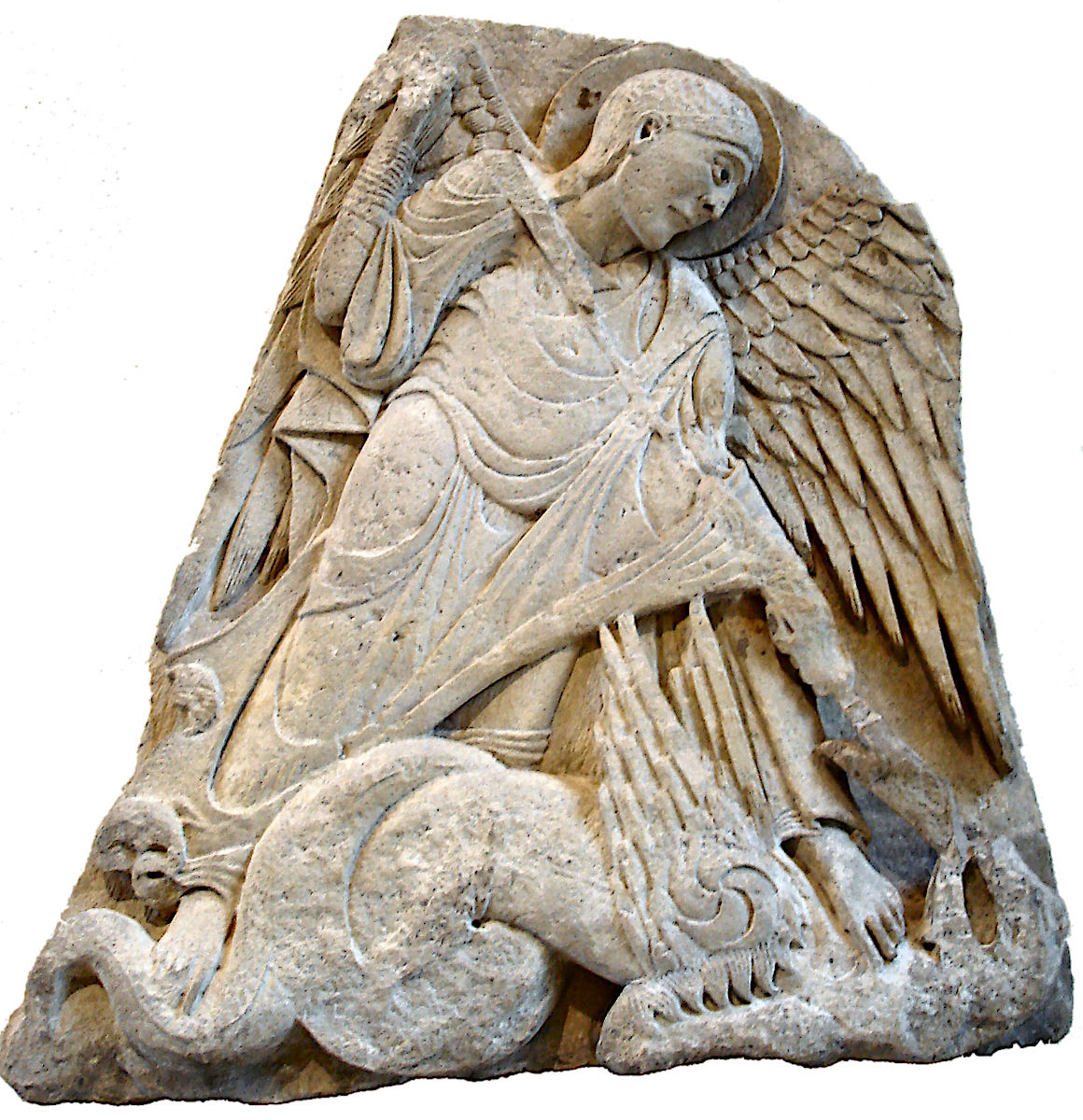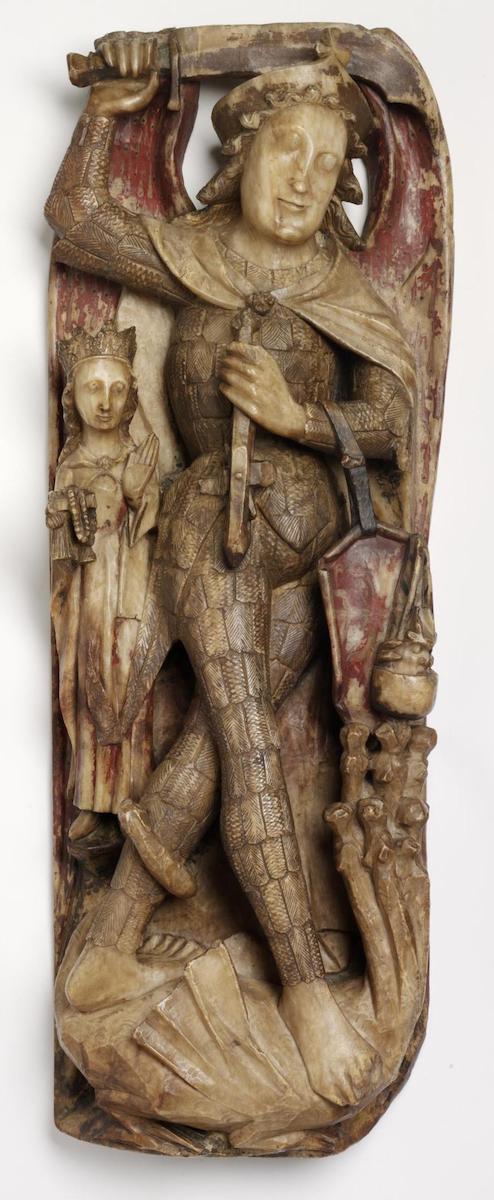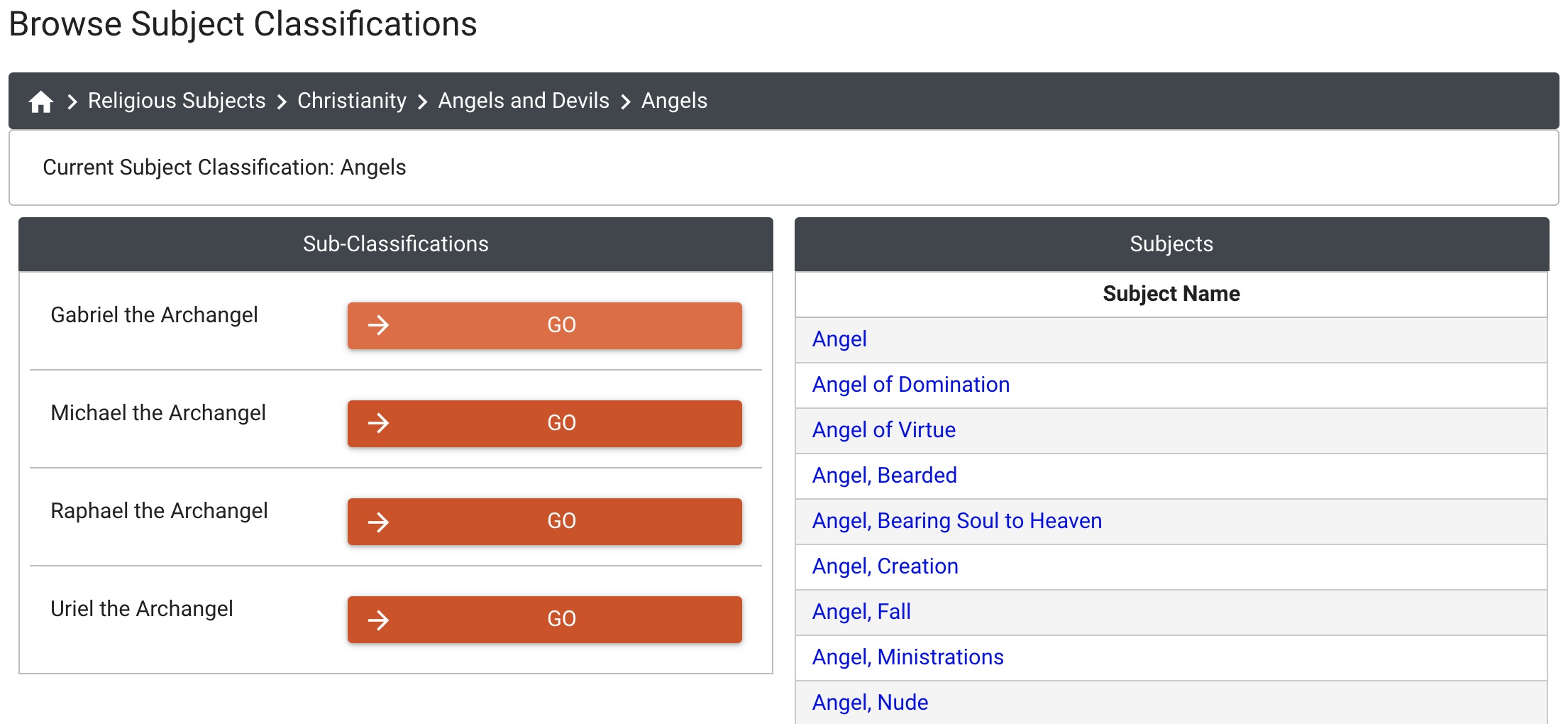


As a victorious angel, defender, and leader of heavenly armies, Michael the Archangel is often depicted in medieval art as an armored soldier carrying such arms as a cross-inscribed shield, cross-staff, or the sword or spear he typically employs to fight the dragon in the “great battle of heaven” (Apocalypse 12:7–9; see the Index subject Apocalypse, Dragon Attacked by Michael). Outside of the apocalyptic combat scene, Michael also may be shown trampling and piercing the dragon as part of his overall iconography. This figuration of Michael as the triumphant archangel lent a devotional and meditative aspect to his veneration as an overcomer of evil, as is often clear in images related to the Christian feast of Michaelmas. The feast’s name in English derived from “Michael’s Mass” and is traditionally observed in some Western churches on the 29th of September. While Michaelmas was primarily celebrated to acknowledge the works of Michael the Archangel, this feast also celebrated the help and intercession of all angels. Michaelmas also bore secular significance for medieval people as a “quarter day” of the financial year, which signaled the fulfillment of various business obligations, and the close of the agricultural year (For more on this holiday, see Ben Johnson, Michaelmas, The Blog of Historic UK).

At this time of Michaelmas, a dive into the online collection of the Index of Medieval Art reveals a wealth of examples tied to the iconography of the revered archangel. The most common representation is of Michael the Archangel fighting the dragon. In the language of the Index, that’s Michael the Archangel, Transfixing Dragon. This subject heading is attached to nearly 300 works of art in the database applied to a variety of media, including a Romanesque limestone relief panel from Burgundy, now in the Louvre Museum in Paris (Fig. 1). A closely related subject, Michael the Archangel, Transfixing Satan, is applied to works of art in which the dragon has morphed into a devilish creature, usually shown with horns and clawed feet. Like the hapless dragon, this creature is similarly impaled and trampled! Exploring these two similar subjects reveals a later preference for the literal depiction of devils in place of dragons. Michael the Archangel also features in other important episodes, such as the biblical narrative of the Fall of Angels and the Last Judgment of Christ (Figs. 2 & 3). In Last Judgment scenes, Michael the Archangel is often shown holding the scales of justice laden with good and bad souls (See the Index subject Weighing of Soul).

A fifteenth-century alabaster panel from England combines many aspects of Michael’s typical iconography: here, wearing a suit of armor that resembles feathers, he also bears a shield and raises his sword over the vanquished dragon. One weighing pan of his scales remains, holding a devil head, while behind him, a crowned Virgin intercedes to emphasize mercy with justice (Fig. 4).

In the Index database, Michael the Archangel is by far the best represented of the archangels, with thirteen subjects covering his various roles, from intercessor and commanding soldier to apparition in visions and legends. A common legendary context for Michael is that of the “Runaway Bull” in the Golden Legend. According to the legend, a wayward bull belonging to Garganus, a wealthy man from Siponto, is miraculously saved from the shot of an arrow, which instead reversed in midair and killed the huntsman. As an explanation for this strange occurrence, Michael the Archangel appears to a local bishop to reinforce the idea of grace at the bull’s saving and to tell him to build a church in his honor (Fig. 5). The hilltop sanctuary of San Michele del Gargano is still a popular site of pilgrimage in the town of Monte Sant’Angelo in southern Italy.

For a more general overview of the iconography of angels in the Index database, we encourage you to browse sections of the new subject classification network by clicking “Browse” and proceeding to the link for “Subject Classification.” From here, click on Religious Subjects, then Christianity, then Angels and Devils. In the sub-group of Angels, you will encounter a list of over twenty iconographic headings associated with various angels, including seraphs, cherubs, and several more subjects for angels engaged in specific actions, such as “Protecting Soul” and “Pursuing Devil.” On the left are further divisions for the four major archangels of Christian angelology—Gabriel, Raphael, Uriel, and Michael—which list the individual subjects related to each. At the bottom of each authority for these subjects, you’ll see a bar for “Work of Art References” that will take you to the relevant work of art records.

Registration is now open for the Fall Index conference, “Art, Power, and Resistance in the Middle Ages,” November 16, 2019. To view the speakers and schedule and link to the registration form, please click the link below.

As always, Index conference admission is free and open to the public; your registration is appreciated to ensure adequate seating and refreshments. https://ima.princeton.edu/conferences/